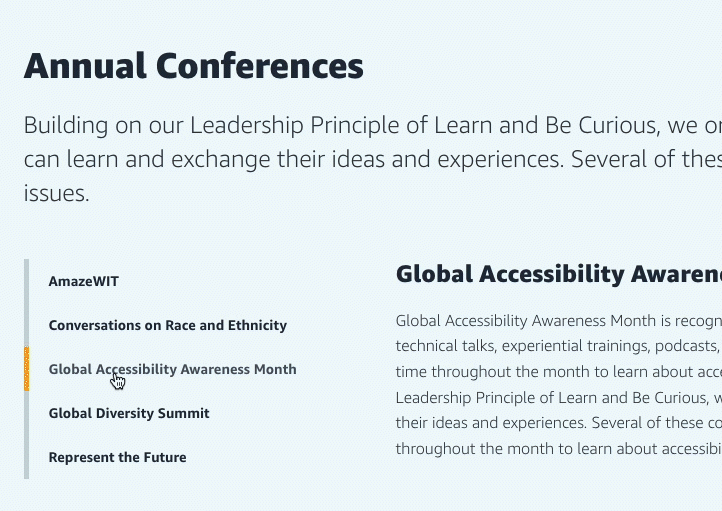
Sustainability
at Earth's most customer-centric company

Bias for action
In 2019, 25-year-old Amazon planned a historic first: it would offer a public look into its global sustainability efforts.
Having already quietly undertaken the monumental effort to reduce its carbon footprint to Paris Accord standards a full 10 years before the Accords required, the e-commerce and cloud-hosting behemoth was ready to show off its progress. The experience would reach worldwide audiences through a primary English-language website, plus targeted microsites in four additional languages.
Slated to be announced with great fanfare by Amazon Founder & CEO Jeff Bezos at the National Press Club in Washington D.C., the project was kept very quiet. I was entrusted with responsibility for overseeing and implementing the digital components of the activiation.
Working with a scrappy and incredibly talented team of stakeholders, creators, and engineers — and in the span of approximately nine months — I developed visual language for the Amazon Sustainability brand extension, product managed creation of a Brightspot CMS-based template and module library, and led development and launch of the inaugural release.

Early in the project, I led stakeholders through an exercise to define a site and page level information architecture. This allowed us to zero in on component needs, design site navigation, and develop a manifest of required visual assets very early in the project, reducing dependant paths and leaving us more runway to execute without feeling rushed.

A collection of tightly-designed, dynamically filled stackable components allowed content specialists to build and maintain pages on their own. Documentation, developed by me, enabled content team members to select components based on content need while preserving consistency in page structure and design intent.
A core communications goal was to show that Amazon's committment was holistic and tailored to the specific impacts Amazon's operations create, not just a few rote, tacked-on programs. To that end, I advocated for a visual and product design approach that brought forward the complexity and interconnectedness of Amazon's philosophy on sustainability.
Leaning into illustration (creative direction by me, produced by very talented editorial illustrator Harry Campbell) we were able to create visual representations of complex and abstract ideas that didn't rely on stock photography of grinning employees, wind turbines, and flashing data centers. We could show how Amazon's sutainability efforts were built on intelligently connected systems that are too vast to be seen from any one vantage point. It had the added advantages of giving us a visual language we could own, and a level of specificity into the story each image told.
I identified the theme for each of about 40 illustrated images and icons, what concepts should or should not be included, and how they might best fit together. On key images, we worked to add humanity and life through the use of the Lottie toolset to create subtle animation.
Ultimately...
Amazon's global fleet of sustainability sites launched in late September 2019. The launch coincided with Amazon Founder & CEO Jeff Bezos announcing the foundation of the Climate Pledge, a plan for large comapnies to meet the goals in the Paris Climate Accords ten years early.
The site's tech stack, design language, and component library were carried forward for four years with minimal redesign. In late 2022, Amazon launched a new version of the brand extension. Nevertheless, it continues to use the successful underlying product design work, tech stack, and component library I built to share its sustainability story to millions of people around the world.
Selected Works
This website ©2025 Adam Kuglin.
Trademarks are property of their respective owners.